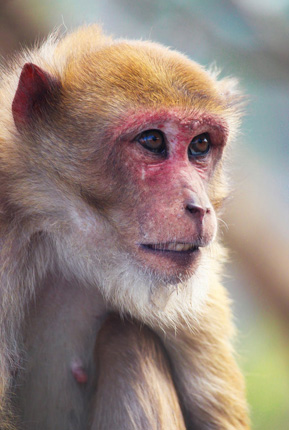
All Animals

The Monkey: Agile and Intelligent Inhabitants of Diverse Habitats
Monkeys are among the most fascinating and diverse mammals in the animal kingdom, known for their agility, intelligence, and complex social structures. Found in a wide range of habitats—from tropical rainforests to mountainous regions and even urban areas—monkeys play a vital role in their ecosystems and exhibit a remarkable variety of behaviors and adaptations.
Monkeys belong to the order Primates, which also includes apes and prosimians. They are typically divided into two main groups: New World monkeys and Old World monkeys. New World monkeys are native to the Americas, while Old World monkeys are found in Africa and Asia. Each group has evolved distinct characteristics and adaptations suited to their environments.
New World monkeys, such as capuchins and spider monkeys, are known for their prehensile tails, which function as an additional limb for grasping branches and maneuvering through the treetops. These monkeys often have a more varied diet, feeding on fruits, nuts, insects, and small animals. Their social structures can range from small family groups to larger troops, and they exhibit a wide range of vocalizations and behaviors.
Old World monkeys, including species like baboons, macaques, and colobus monkeys, are characterized by their non-prehensile tails and more robust physical build. These monkeys are often found in diverse environments, from savannas and forests to mountainous regions. They typically have a more varied diet, including fruits, leaves, seeds, and insects, and their social structures can be highly complex, involving hierarchies and intricate social interactions.
Monkeys are renowned for their intelligence and problem-solving abilities. They use tools, exhibit self-awareness, and demonstrate a wide range of cognitive skills. For example, some species use sticks to extract insects from crevices or rocks to crack open nuts. Monkeys also engage in sophisticated social behaviors, such as grooming, which helps reinforce social bonds and reduce tension within groups.
The behavior of monkeys can be highly variable depending on the species and their environment. Some monkeys are arboreal, spending most of their time in trees, while others are terrestrial, foraging and living on the ground. Their vocalizations are diverse and can convey a range of messages, from alerting others to predators to coordinating group movements and expressing emotions.
Despite their adaptability and intelligence, monkeys face numerous threats in the wild. Habitat destruction due to deforestation, illegal wildlife trade, and human-wildlife conflict have led to declines in monkey populations and endangered several species. Conservation efforts are essential to address these threats, focusing on habitat protection, anti-poaching measures, and education to foster coexistence between humans and wildlife.
Monkeys also hold significant cultural and scientific value. They have been featured in folklore, mythology, and art across various cultures, symbolizing traits such as mischief, intelligence, and curiosity. In scientific research, monkeys are valuable models for studying primate behavior, evolution, and health, providing insights that are crucial for understanding human biology and medicine.
In summary, monkeys, with their agility, intelligence, and diverse behaviors, are remarkable inhabitants of our planet. Their role in ecosystems, their social complexity, and their cultural significance highlight the importance of conserving their habitats and ensuring their continued survival. By supporting conservation efforts and fostering a greater appreciation for these extraordinary animals, we contribute to the preservation of biodiversity and the health of our natural world.
